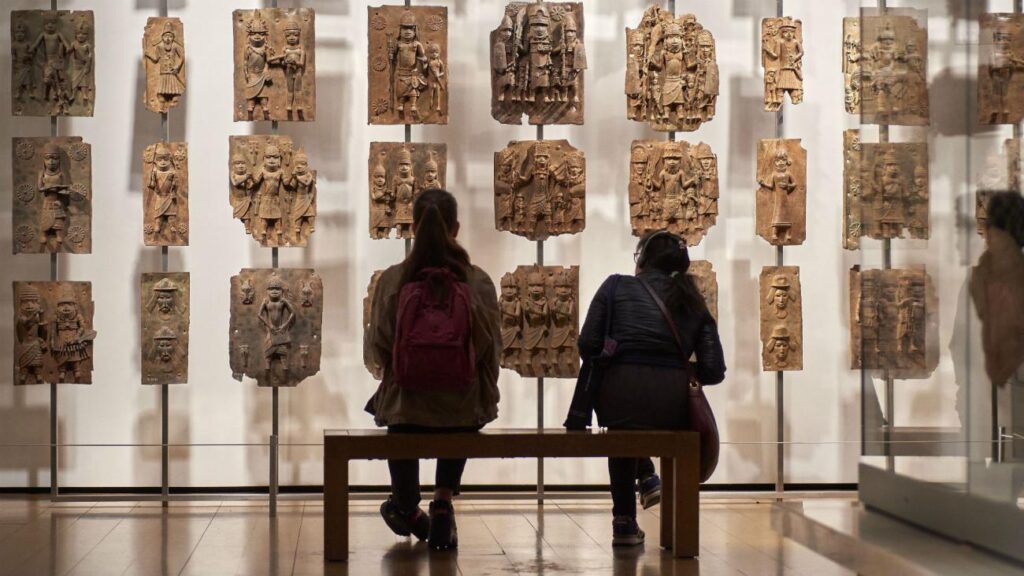
British Museum
In London’s British Museum you can see beautiful art from all over the world, learn the history of other countries, and admire their creations. Unfortunately, this convenience is a result of centuries of the British looting non-western nations’ art. Much of this art belongs to the Royal Collection, which contains practically everything the British Royalty has stolen through the centuries. Countries have understandably been demanding their art back, with little success (the term commonly used for the return of art to its country of origin is “repatriation”). Although the British Museum does loan art to other countries, it’s rather ironic to be loaning the very art you stole to the nation stolen from. If the British Museum returned all the artifacts it has stolen from other nations, it would be practically empty. People flock to London to gape at the wonderful British Museum, while also dismissing the countries the art is actually from. Art is really much more than just art in this case; it’s symbolic of our world’s history of imperialism.
One of the most contested collections of art is the Benin Bronzes, located primarily in Britain and France following the looting of the Royal Palace of Benin (in present-day Nigeria) in 1887. There is no argument this was a legal transaction; it was just stolen art. And yet, Nigeria’s demands for the return of these statues have been largely ignored. In Beijing, The Summer Palace (rebuilt after being burned down) still hasn’t gotten back the pieces auctioned off by British commander Lord Elgin in 1860. The Acropolis Museum in Greece continues to demand the return of the Parthenon Marbles (also known as the Elgin Marbles, can you guess whose family was responsible for this theft?), and the Rosetta Stone, taken from Egypt by Napoleon, sits in a glass case in London. Sitting on the former queen’s head was a crown, containing India’s Koh-i-Noor diamond. Some thought that her death would mean the return of this, but no such luck. The diamond’s history is extremely complicated—Britain claims it was legally obtained during the annexation of India in 1849—but India, Afghanistan, and Iran have claimed ownership of it and requested its return.
Some progress has been made, with The Horniman Museum returning a collection of the Benin Bronzes just this August. In late November, the museum also signed over 72 objects (including some Benin Bronzes) to Nigerian ownership. The museum’s website reads, “We recognize that we are at the beginning of a journey to be more inclusive in our stories and our
practices, and there is much more we need to do…this includes reviewing the future of collections that were taken by force or in unequal transactions.” This is a good acknowledgment to make, however, other museums throughout the country have not mirrored these efforts and still hold on to other Nigerian art. The art from Greece, India, and China discussed earlier has not been returned, and will likely not be returned anytime soon.
It’s baffling this is even up for debate: much of this art was undisputedly stolen and must be returned to the nations pillaged by imperialism by the Western world. Although I’m aware this article will do absolutely nothing to influence Britain’s government, I’m hopeful it will inspire you to think about the actual origin of art when admiring it. The achievements of nations in Asia and Africa have been continuously diminished by the West, yet it continues to profit off their creations. Imagine a world in which we actually take accountability for our heinous past and make an effort to make reparations to all the nations that have been pillaged for their resources. Repatriation of art is just the first thing that needs to be done.
